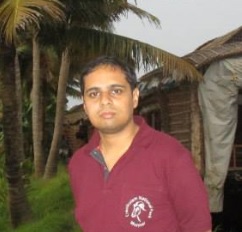 “Water, water, everywhere, Nor any drop to drink,” said a mariner, who had returned from a long sea voyage, to a man on his way to wedding ceremony in The Rime of Ancient Mariner.
“Water, water, everywhere, Nor any drop to drink,” said a mariner, who had returned from a long sea voyage, to a man on his way to wedding ceremony in The Rime of Ancient Mariner.
The sea level in Bangladesh is rising as a consequence of all the evil we are doing by polluting Mother Earth on our journey to be more prosperous. One of its many consequences is the intrusion of saline water in the coastal region which puts people living there at a higher risk of hypertension. A study from Bangladesh found that Bangladeshis did not recognise that salt can occur naturally in water and food and they believed that the cooking process makes it harmless. To top that the risk perception about excessive salt consumption was low. This makes public health communication very challenging in the region, but at least now the scale of the issue is known.
Cholera originated in the Gangetic plains of India but spread, killing millions, across the world. It still does and is endemic in several countries most notably in Bangladesh and India. I thought that improvements in water supply would be the solution, but why do that when we can make vaccines? There are two WHO pre-qualified oral cholera vaccines—both of these require two doses. A trial from Bangladesh published last month in NEJM conducted an efficacy trial of a single dose of one of these vaccines—Shanchol. The vaccine’s protective efficacy was found to be 40% for all cholera episodes in children more than five years old and adults. It comes at a price of US$ 1.85 per dose.
Moving away from the theme of undrinkable water, Bhutan published an observational study and situational analyses about the burden of malaria and associated costs from 2006-2014. The paper identifies that a challenge for the country is “importation of malaria, especially from India.” The Indian Journal of Tuberculosis published a study last month which reported the general mortality rate and the tuberculosis mortality rates for the two states of Andhra Pradesh and Orissa. The only caveat is that the data are ten years old.
The journal which was full of activity last month was Indian Pediatrics. It published a short review comparing different neonatal resuscitation guidelines, a study which found that overweight and obese girls showed an earlier onset of puberty compared to those with normal BMI and a point-counterpoint article on whether the hypoglycemic encephalopathy in Muzaffarpur was caused by toxins in Litchi fruit.
It looks like the NEJM clinical image will keep its space in the column this month too with the image of Petaloid Cataract in a patient with blunt trauma of the eye in India.
Soumyadeep Bhaumik is a medical doctor from India and he works on evidence synthesis and public health. He is currently studying international public health at the Liverpool School of Tropical Medicine. All opinions are personal. Twitter @DrSoumyadeepB.
Competing interests: I have read and understood BMJ policy on declaration of interests and declare that in the past served in editorial positions in several medical journals, including until recently in an Indian journal. I have no other relevant conflicts of interests to declare.
